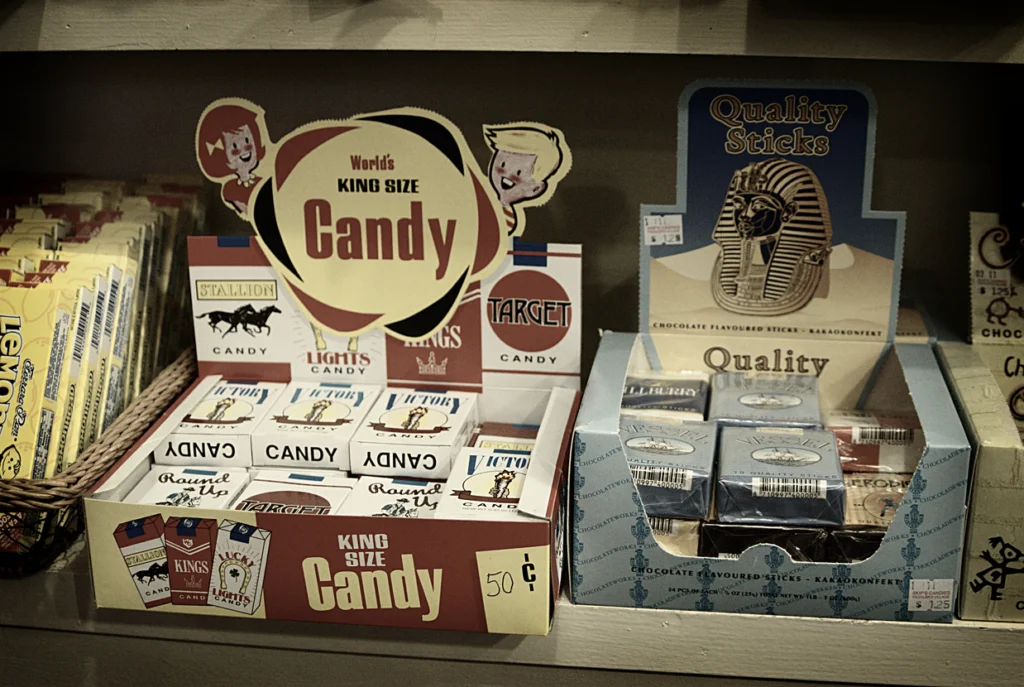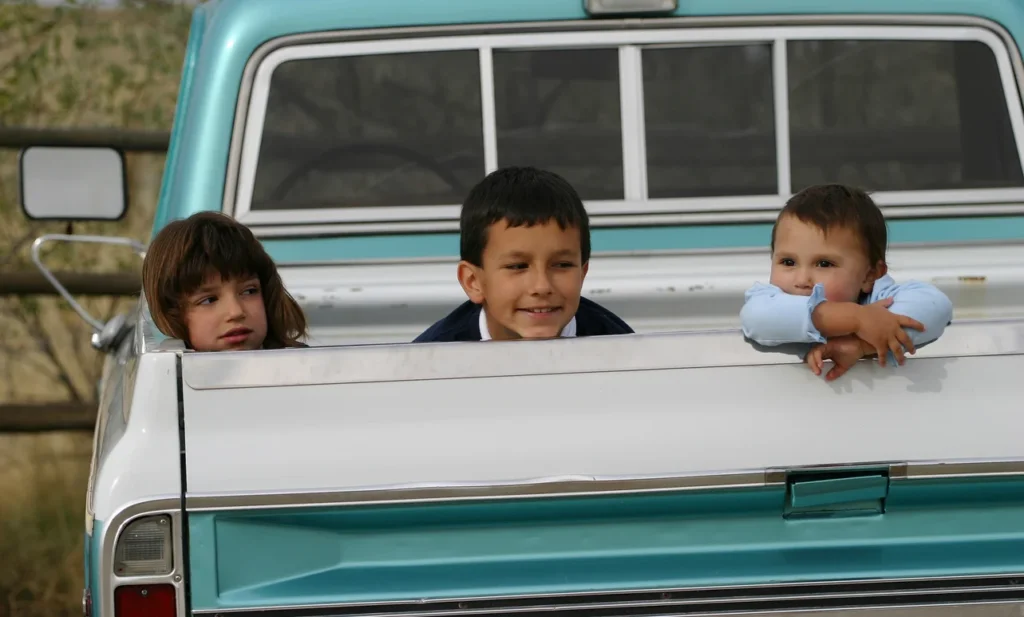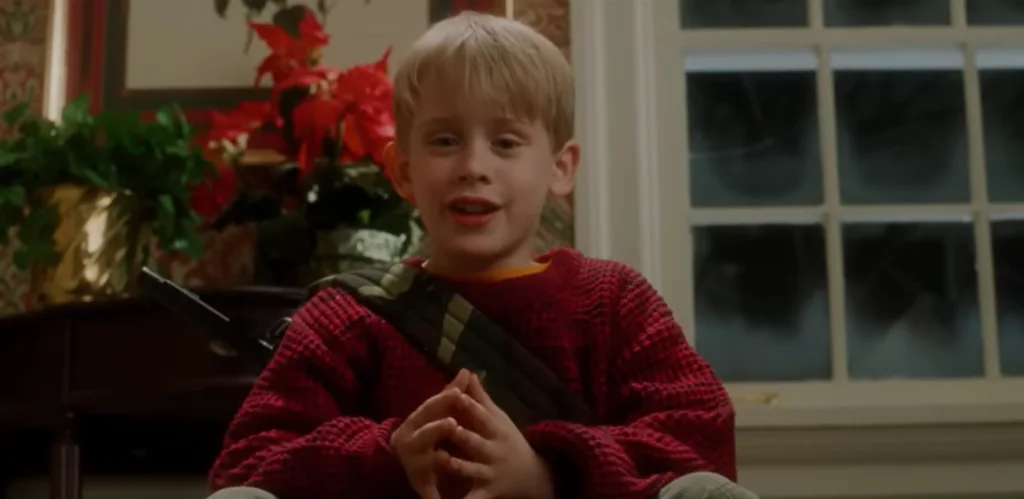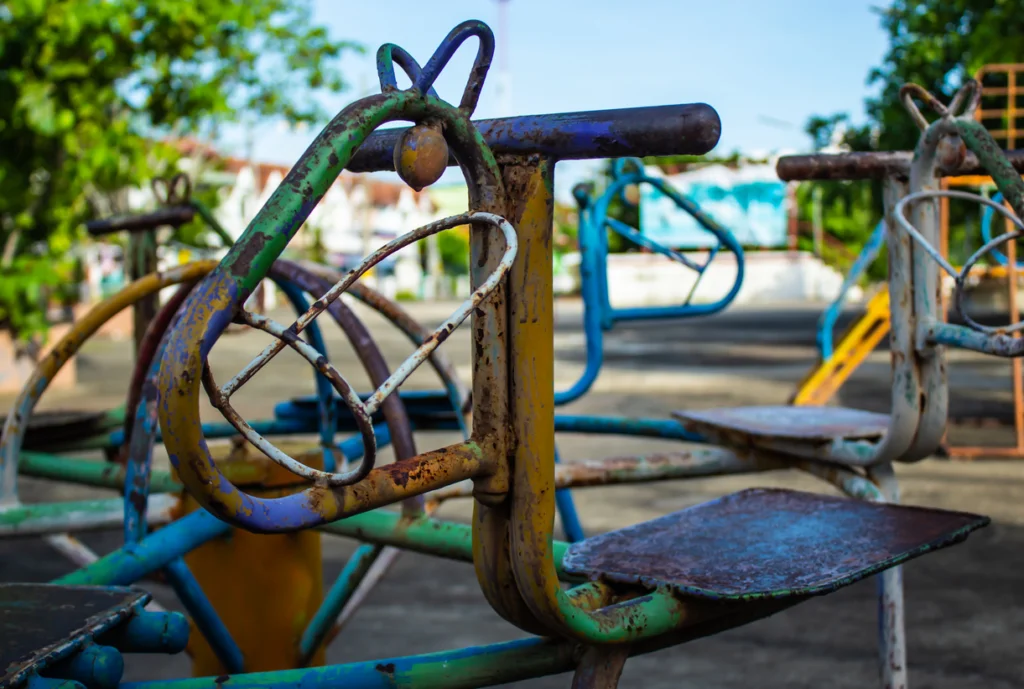Growing up in the 1970s was a unique experience marked by a parenting style that could generously be described as “hands-off.” It was the golden age of childhood independence, where helicopter parents hadn’t been invented yet and the phrase “free-range kids” wasn’t necessary because that was just called “childhood.” Those of us who survived this era look back with a mixture of nostalgia, disbelief, and perhaps a twinge of envy for the freedom we experienced. Before liability concerns, constant connectivity, and safety regulations transformed parenting, here’s a look at what was perfectly normal then but would cause neighborhood gossip or even a visit from protective services today.
1. Riding in Cars Without Seatbelts or Car Seats

In the 1970s, infant car seats existed but were basic affairs, while older children simply sat wherever they wanted in the car—seatbelts optional. The classic station wagon often featured a rear-facing “way back” seat where kids would bounce around happily, completely untethered. For long family road trips, parents would fold down the back seats so children could stretch out with pillows and blankets, essentially creating a rolling slumber party as dad cruised down the highway at 70 mph. As shown on Your AAA Network, the seatbelt along with its treatment in legislation has come a very long way.
Remember sitting on your mom’s lap and “helping” to steer the car, or lying across that little shelf beneath the rear window? Children regularly rode in truck beds, stood up through sunroofs, or sprawled across the dashboard with zero concern from passing police officers or judging neighbors. Today’s parents, who meticulously research car seat safety ratings and follow strict height and weight guidelines, would be horrified at the casual way we traveled—like human cargo enjoying the wind in our hair.
2. Disappearing All Day Without Cell Phones

On summer mornings, kids would gulp down breakfast and vanish into the neighborhood until dinnertime, with the only parental instruction being “be home when the streetlights come on.” We roamed miles from home on bikes, exploring woods, construction sites, and shopping centers with no way for parents to check our whereabouts or safety. The idea that a parent might not know their child’s exact location for eight straight hours would trigger anxiety in today’s world of GPS tracking apps and hourly check-in texts. These days, Big Life Journal stresses the many benefits of both unplugging and playing outside in general.
Our parents had no real-time updates about our activities, no photos of what we were doing, and no way to reach us in emergencies beyond sending an older sibling to find us or calling another child’s house on the landline. The beautiful paradox was that despite (or perhaps because of) this lack of supervision, most of us developed strong problem-solving skills, conflict resolution abilities, and an intuitive sense of calculating risk that seems increasingly rare in today’s more managed childhoods. Parents today who attempt similar independence for their children often face judgment or even legal consequences for what was once considered normal parenting.
3. Riding Bikes Without Helmets

Bicycles were our primary transportation, freedom machines that extended our range beyond walking distance—and nobody wore helmets. We rode standing on the pedals, no-handed, double-carrying friends on handlebars or the book rack, and attempting Evel Knievel-inspired jumps over homemade ramps. Parents not only permitted but encouraged this helmet-free cycling, often purchasing bikes that were too big for us to “grow into,” meaning we couldn’t touch the ground while seated but somehow managed to ride anyway. Better Health Channel promotes the benefits of bike riding for everyone of all ages.
The cherry on top of this safety nightmare was that many of us rode these death traps in flip-flops, barefoot, or while carrying large objects that made balance precarious at best. Our bikes had minimal safety features—some still had pedal brakes rather than hand brakes—and maintenance was an afterthought until something actually broke. Today’s parents organizing helmet-required bike rodeos and purchasing reflective safety gear would be aghast at the cavalier approach to what injury prevention specialists now recognize as a major source of childhood head trauma.
4. Playing with Seriously Dangerous Toys

The 1970s toy market was a product liability lawyer’s dream, filled with items that somehow passed safety regulations despite posing obvious hazards. Children regularly received chemistry sets with real chemicals that could explode or cause burns, Jarts (lawn darts with metal tips that could penetrate a skull), clackers (acrylic balls that shattered into sharp fragments), and Easy-Bake Ovens that reached scalding temperatures. Parents not only purchased these items but encouraged their use with minimal supervision.
The toy manufacturing philosophy seemed to be “they’ll learn from their mistakes,” an approach exemplified by the popular Creepy Crawlers toy that allowed kids to pour liquid plastic into metal molds and bake them in a device that reached 300+ degrees. Woodburning kits, BB guns, slingshots, and sharp-edged metal toys were common gifts for elementary-aged children, none requiring parental assistance or bearing the extensive warning labels we see today. The resulting minor injuries were considered character-building experiences rather than reasons for product recalls or lawsuits.
5. Secondhand Smoke Everywhere

In the 1970s, adults smoked cigarettes everywhere—in homes, cars, restaurants, airplanes, and even hospital waiting rooms—with zero concern about exposing children to secondhand smoke. Parents puffed away while driving with windows barely cracked, during meals, and in living rooms where kids played on the floor. The family car invariably featured an overflowing ashtray, and children became adept at finding Mom’s cigarettes and lighter when she asked you to fetch them.
Being sent to buy cigarettes for parents was a normal errand for children as young as seven or eight, who would dutifully deliver a handwritten note to the store clerk: “Please sell my son/daughter a pack of Marlboros.” Restaurants didn’t have non-smoking sections until late in the decade, and even then, the separation was often symbolic at best. Today’s parents, who might avoid playgrounds where adults are smoking nearby, would be shocked by how tobacco smoke was once the background scent of childhood, clinging to our clothes, hair, and toys.
6. Sunbathing With Baby Oil Instead of Sunscreen

Sun protection in the 1970s didn’t mean SPF 50 and UV-protective clothing—it meant slathering ourselves with baby oil or tanning lotion to intensify the burn. Parents not only allowed but encouraged their fair-skinned children to “get some color,” often judging a successful summer day by how many shades darker their kids had become. Sunburns were so routine they were treated as an inevitable part of summer, with remedies focusing on after-burn care rather than prevention.
The concept of reapplying sunscreen every two hours would have seemed absurdly overprotective to parents who sent kids out to play all day with no sun protection whatsoever. Children routinely experienced peeling shoulders, blistered noses, and the distinctive sting of sunburn when taking a bath at night, all considered normal childhood experiences rather than concerning exposures to skin-damaging UV radiation. Today’s parents, armed with sunscreen sticks, rashguards, and broad-brimmed hats, would be horrified by family photo albums showing lobster-red children proudly displaying their summer “tans.”
7. Candy Cigarettes and Other Questionable Treats

Children in the 1970s regularly consumed candy explicitly designed to mimic adult vices, with candy cigarettes being the most notorious example. These chalk-like sticks came in packages mimicking actual cigarette brands, and children would hold them between their fingers, pretending to smoke while they slowly dissolved the candy or used it to blow out “smoke” (powdered sugar) into the air. Parents and other adults often found this amusing rather than concerning, sometimes even teaching kids how to hold their candy cigarettes “properly.”
Beyond tobacco-themed treats, we had bubble gum packaged like chewing tobacco, candy dispensers shaped like slot machines, and incredibly dangerous choking hazards like jawbreakers the size of golf balls. Children routinely ate artificially colored treats that would make today’s organic-focused parents shudder—Bottle Caps, Zotz, Pixie Sticks, and candy necklaces covered in dust from playground adventures. Sugar consumption was virtually unmonitored, with breakfast cereals that were essentially dessert and after-school snacks that would now qualify as special occasion treats.
8. Riding in the Back of Pickup Trucks

Nothing said “special treat” to a 1970s kid like being allowed to ride in the back of an open pickup truck, feeling the wind whip through your hair as you held on for dear life over bumps. Parents would load up multiple children in truck beds for trips across town or even on highways, with no restraints beyond the instruction to “sit down and hold on tight.” This practice was so common that no one gave a second glance to a truck full of waving, bouncing children.
The only “safety measure” might be an adult occasionally checking the rearview mirror to make sure all passengers were still present, or yelling “sit down!” if children became particularly rowdy. For extra fun, parents would sometimes drive through puddles or take corners a bit sharply, sending kids sliding across the truck bed—an impromptu amusement ride rather than a cause for concern. Today, this practice is explicitly illegal in many states and would almost certainly result in a concerned citizen calling authorities if witnessed.
9. Staying Home Alone at Young Ages

Latchkey kids were a cultural phenomenon of the 1970s, with children as young as six or seven regularly staying home alone after school while parents worked. These young children were entrusted with house keys, basic food preparation, and self-management for hours each day, often with minimal communication options beyond emergency phone numbers taped by the telephone. Many elementary school students would let themselves in, prepare snacks involving knives or stoves, and manage their time without adult supervision until dinnertime.
Parents provided minimal safety instructions—basically “don’t answer the door and don’t burn the house down”—and trusted children to handle emergencies appropriately. Younger siblings were often left in the care of older ones, with ten-year-olds responsible for feeding, monitoring, and decision-making for kindergarteners. Today’s parents, who schedule supervised activities and childcare to avoid any unsupervised time, would be astonished by how much responsibility was placed on young children—and how most rose to meet those expectations capably.
10. Playground Equipment of Doom

The 1970s playground was an injury factory featuring equipment mounted over concrete or packed dirt with no concern for fall zones or impact absorption. Giant metal slides would reach scalding temperatures in summer sun, yet parents would simply tell us to “test it with your hand first” before sending us up the ladder. Merry-go-rounds became centrifugal force demonstrations as older kids spun them to nauseating speeds, sending smaller children flying off in all directions while adults watched from park benches without intervention.
The crowning glory of dangerous playground equipment was the towering metal jungle gym or monkey bars, often reaching heights of 10 feet or more, where children would perform increasingly risky stunts while others waited their turn below. Seesaws (teeter-totters) allowed for the classic childhood prank of jumping off when your partner was at the highest point, causing them to crash painfully to the ground—a maneuver that often resulted in tailbone injuries but rarely parental concern. Modern parents visiting carefully designed playgrounds with rubberized surfaces, rounded edges, and limited heights can hardly imagine the injury-prone equipment their parents once considered perfectly appropriate for public recreation.
Those of us who grew up in the 1970s sometimes wonder how we survived childhood, given the casual approach to safety that defined the era. Yet there’s also a bittersweet recognition that we experienced freedoms largely unknown to today’s children—the thrill of genuine independence, the pride of handling legitimate responsibility, and the confidence that comes from navigating risk without constant supervision. While no one would advocate returning to lawn darts or riding without seatbelts, perhaps there’s a middle ground that preserves the valuable lessons of self-reliance and reasonable risk assessment that came naturally in those less protected times. After all, the generation that survived metal slides, bike crashes, and chemical sets somehow lived to tell the tales—and secretly wonders if today’s kids are missing something important beneath all that necessary safety equipment.


